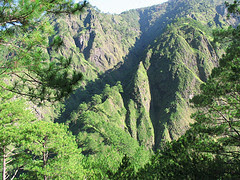 Let's discover and rediscover the Paradise Philippines!
Let's discover and rediscover the Paradise Philippines!Located in the heart of Southeast Asia is the Republic of the Philippines (often called on this blog the Paradise Philippines), the second largest archipelago in the world with 7,107 islands and a mixture of Malay, Chinese, Spanish and American influences.
Majority of the 72 million Filipinos are Christian, with significant numbers of Muslims and indigenous people. The Paradise Philippines is a tropical country with dry and wet seasons. It's also the world's third largest English-speaking nation.
The country is divided into three geographical island groupings-- Luzon, Visayas, and Mindanao. Metro Manila is the seat of government and the premier international gateway. Embracing the capital of Manila and several cities and municipalities, it's the heart of the country's social, economic, and cultural life.
Luzon is the largest island, with 55% of the country's population residing there. It's home to the Cordillera, Sierra Madre, and Caraballo mountain ranges, volcanoes such as Mayon, Taal and Pinatubo, and the Paradise Philippines largest lake, Laguna de Bay.
The Visayan islands are characterized by natural and cultural diversity. The beaches of Boracay are regarded as some of the world's best. Cebu is the cradle of Christianity in the Paradise Philippines. Bohol has one of the world's most intriguing geological formations.
Mindanao, the second largest island, is the seat of Muslim culture and homeland of colorful ethnic tribes. Davao is geographically the largest city in the world, while Mount Apo is the Paradise Philippines highest peak. Zamboanga along with the Sulu archipelago is fabled for its seafaring communities.
Ready to travel to Paradise Philippines?
 The Mountain Systems of "Paradise Philippines".
The Mountain Systems of "Paradise Philippines".